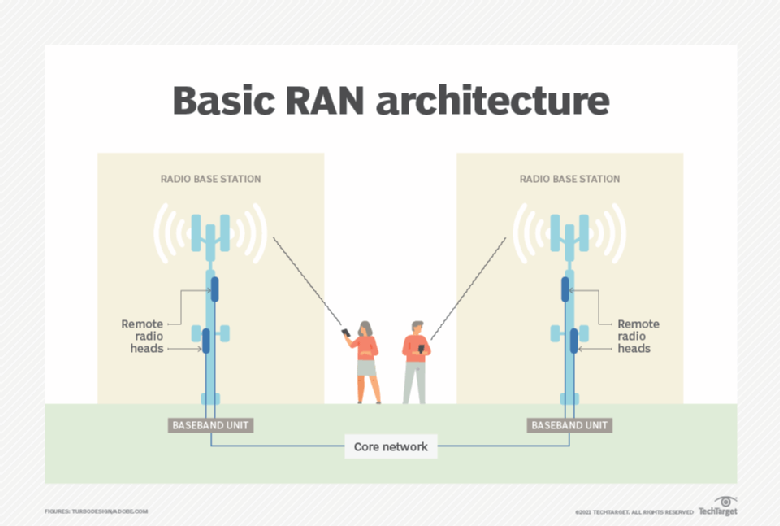What is a radio access network (RAN) in telecom?
Have you sent or received a text message today? Chances are you have. And if that’s the case, your text message was most likely delivered instantaneously. A conversation over text can happen in real time; and when it doesn’t, we get frustrated pretty quickly. Have you ever stopped to think about how we’re able to exchange text messages in the first place? While it would take much longer than this post to dive into all of the technology behind texting, today we’re going to talk about one key element that makes modern, lightning-fast texting possible: RANs, or radio access units.
A RAN is the radio component of a cellular network that uses radio frequency to connect mobile devices or computers with the core network. RANs have been utilized since the earliest 1G cellular networking in 1979 in Tokyo, and since 1983 in the US. RAN technology has advanced tremendously since it was first introduced, and it is still used today in modern 5G networking. C-RAN (centralized or cloud radio access networks) is the latest advancement in RAN technology. Now, most 5G networks are radio access networks.
There are several different types of RANs:
- O-RAN (open radio access network)
- C-RAN (cloud or centralized radio access network)
- GRAN (GSM radio access network)
- GERAN (specifies the inclusion of EDGE packet radio services)
- UTRAN (universal mobile telephone system RAN)
- E-UTRAN (evolved universal terrestrial RAN)
How do RANs work?
Radio access networks are made up of several key elements: antennas, radios and baseband units (BBUs). Each element plays a significant role in RAN technology.
- Antennas convert electrical signals into radio waves.
- Radios convert digital information into signals, send them wirelessly, and ensure that transmissions maintain the correct frequency bands and power levels.
- BBUs provide signal processing functions that enable wireless communication. This processing detects errors, secures the signals and makes sure that wireless resources are used effectively.
Practically, here’s what all this looks like. You send a text message to your friend. A radio access network’s antennas will collect information from your mobile device and convert the initial electrical signal into radio waves. Next, the radios will convert the information they receive into signals that can be sent wirelessly through a BBU. Finally, the BBU sends the information to the core network. At this point, the same process happens in reverse, until your friend receives the text message. Check out the graphic below from TechTarget, which shows a visual illustration of the process.
This entire chain of events happens every time you send a text message, and every time you receive one. When you realize this, it’s amazing how fast we can text with friends and family. We have only talked about texting, but RAN also technology supports, voice calls, voice texts, video streaming and audio streaming.
To meet the technology shift from 4G to 5G, there is a need to redefine RAN architecture and introduce new equipment and standards. Radiall is investing significant engineering resources and working closely with Telecom OEMs to develop new interconnection solutions for 5G networks. Learn about our interconnect solutions for RAN technology.



